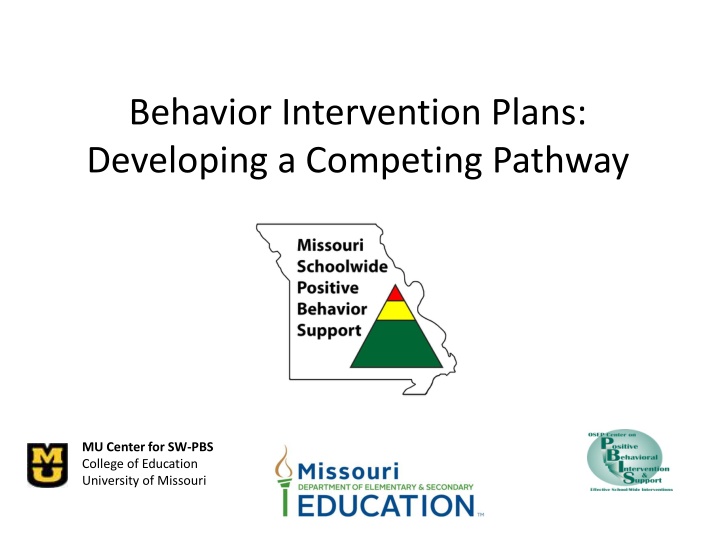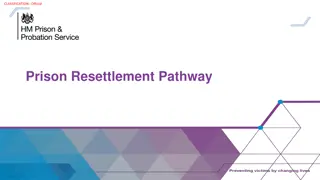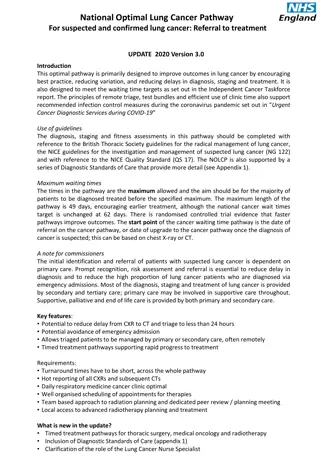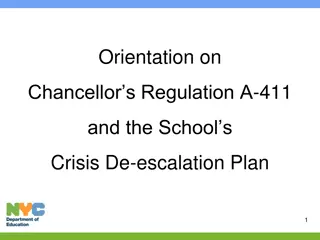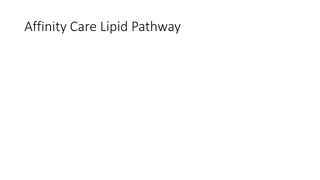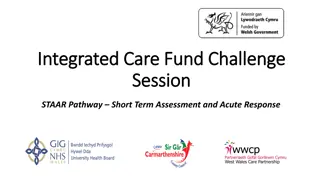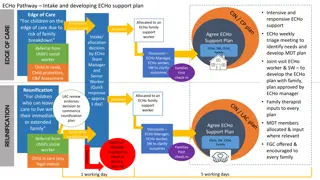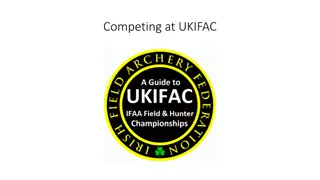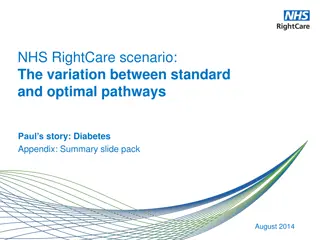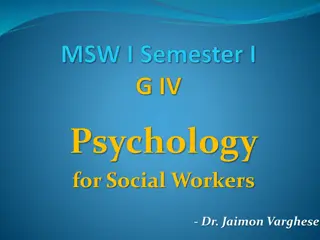Behavior Intervention Plans: Developing a Competing Pathway
Explore behavior intervention plans and how they improve student behavior in educational settings. Learn about defining features, development of competing pathways, BIP components, and effective strategies for creating positive behavioral changes in students.
Download Presentation

Please find below an Image/Link to download the presentation.
The content on the website is provided AS IS for your information and personal use only. It may not be sold, licensed, or shared on other websites without obtaining consent from the author.If you encounter any issues during the download, it is possible that the publisher has removed the file from their server.
You are allowed to download the files provided on this website for personal or commercial use, subject to the condition that they are used lawfully. All files are the property of their respective owners.
The content on the website is provided AS IS for your information and personal use only. It may not be sold, licensed, or shared on other websites without obtaining consent from the author.
E N D
Presentation Transcript
Behavior Intervention Plans: Developing a Competing Pathway MU Center for SW-PBS College of Education University of Missouri
Handouts Behavior Intervention Plan Template FBA/BIP Evaluation Rubric Teaching Desired Long-Term Replacement Behavior Handout Elementary Expectations Matrix MO SW-PBS
Expectations Be Respectful Be an active listener Use notes for side bar conversations Be Responsible Silence cell phones reply appropriately Complete work within activities Bea Problem Solver Ask questions as needed to clarify concepts or directions MO SW-PBS 2
Learner Outcomes Identify defining features of behavior intervention planning from current best practice. Work with sample scenarios to develop a competing behavior pathway MO SW-PBS 3
Behavior Intervention Plans (BIP) A BIP defines how an educational setting will be changed to improve the behavioral success of the student. The BIP describes how the environment will be changed to prevent occurrences of problem behavior. The BIP describes the teaching that will occur to give the student alternative ways of behaving. The BIP describes the consequences that will be provided to (a) reinforce/encourage positive behavior, (b) limit inadvertent reward of problem behavior and discourage problem behavior. MO SW-PBS
Intervention Planning Setting event Antecedent Behavior Consequence Teacher sits back down and continues to play Screams no and hits teacher Hungry Playing with teacher, & teacher gets up to leave Function: Access adult attention Teach/ Replace: Teach a functionally equivalent replacement behavior Prevent: Reduce the likelihood of the problem behavior Reinforce: Make replacement behavior access function Neutralize or minimize the effects of setting events and antecedents to prevent the need for using the problem behavior
Elements of a BIP Teaching Strategies Setting Event Strategies Antecedent Strategies Consequence Strategies Safety Strategies Implementation Plan Monitoring Strategies Generalization & Maintenance Strategies *Behavior Intervention Plan Template MO SW-PBS
High Quality FBA & BIP How will your team insure that you develop high quality behavior intervention plans with fidelity? FBA/BIP Evaluation Rubric *FBA/BIP Evaluation Rubric *FBA/BIP Evaluation Rubric MO SW-PBS
Learner Outcomes Identify defining features of behavior intervention planning from current best practice. Work with sample scenarios to develop a competing behavior pathway MO SW-PBS 3
Developing a Competing Behavior Pathway The Competing Behavior Pathway model is used to create a link between the functional behavior assessment and the behavior intervention plan. MO SW-PBS
Competing Behavior Pathway Desired Desired Behavior Behavior Use writing strategies to complete work Maintaining Maintaining Consequence Consequence Competence with writing tasks Triggering Triggering Antecedent Antecedent Writing sentences or paragraphs Problem Problem Behavior Behavior Draw on the paper, leave assigned area Setting Event Setting Event Difficulty with similar writing tasks Maintaining Maintaining Consequence Consequence Sent to timeout or to the office Function Function Avoid written language tasks Alternative Alternative Behavior Behavior Request short break from writing tasks MO SW-PBS
Developing A Competing Behavior Pathway Step 1 The team copies the functional assessment summary statement into the behavior pathway diagram. MO SW-PBS
Developing a Competing Behavior Pathway Desired Desired Behavior Behavior Maintaining Maintaining Consequence Consequence Triggering Triggering Antecedent Antecedent Grade level Grade level reading and reading and math tasks math tasks Problem Problem Behavior Behavior Co Colors on lors on work; work; Puts head Puts head down down Setting Event Setting Event Previous Previous failure with failure with similar tasks similar tasks Maintaining Maintaining Consequence Consequence Teacher Teacher ignores ignores student student Function Function Avoid reading Avoid reading and math and math tasks tasks Alternative Alternative Behavior Behavior MO SW-PBS
Identify Desired Replacement Behaviors Step 2: Identify Desired Replacement Behavior What do you want the student to do instead of engaging in the problem behavior? Desired behavior (long-term replacement behavior) What skill(s) does the student need to learn to replace or meet the same function as the student s target behavior and improve ability to be successful? The desired replacement behavior should be linked to schoolwide expectations. MO SW-PBS
Desired Replacement Behavior Teaching desired replacement behavior often requires teaching complex skills that the student is lacking, such as . . . Academic deficits Social Skills deficits Communication deficits Organizational/school skills deficits *Teaching Desired Long-Term Replacement Behavior Handout MO SW-PBS
Desired Replacement Behavior Problem Behavior Function Desired Replacement Behavior Quiet when addressed by peers; Cries; Turns around and walks away Escape peer interaction Use appropriate nonverbal signal or simple verbal phrase to respond to peers. Rips paper; Leaves work area and walks around the room Escape difficult tasks Appropriately seek assistance to initiate or complete work ( replace refusing to start a task) Pushes or hits peers Gain peer interaction Use simple phrase(s) to initiate appropriate interactions with peers MO SW-PBS
Activity: Identify Desired Replacement Behavior MO SW-PBS
Desired Replacement Behaviors The gap may be very wide between the desired behavior and what the student is currently doing; therefore, the team will need to identify a short-term alternative behavior. MO SW-PBS
Alternative Replacement Behavior Alternative replacement behavior is . . . An immediate attempt to reduce disruption & potentially dangerous behavior in the classroom Designed to actively begin breaking the student s habit of using problem behavior to meet their needs, by replacing it with a more acceptable alternate behavior MO SW-PBS
Alternative Replacement Behavior Alternative replacement behavior . . . Serves the same function as the problem behavior Is easier to do and more efficient than the problem behavior Requires less physical effort & provides quicker, more reliable access to desired outcome/response than problem behavior Others respond immediately when the student uses the replacement skill, especially during initial instruction? Ensure that replacement skills are encouraged and not inadvertently punished Is socially acceptable MO SW-PBS
Alternative Short-term Replacement Examples Desired Replacement Behavior Alternative Short-term Replacement Use a nonverbal signal to indicate he or she is having difficulty with a task (e.g. place a post-it note on the task, use a power card*, etc.) Appropriately seek assistance to initiate or complete work (to replace refusing to start a task) Identify and use resources to complete difficult tasks Use supplies specially selected for the student to complete difficult tasks Follow directions to initiate and persist to task Use take a break card as designated by the student and teacher MO SW-PBS
Sample Power Card MO SW-PBS
Activity:Identify Alternative Replacement Behavior MO SW-PBS
Activity: Identify Desired and Alternative Replacement Behaviors Desired Desired Behavior Behavior Maintaining Maintaining Consequence Consequence Triggering Triggering Antecedent Antecedent Problem Problem Behavior Behavior Setting Event Setting Event Maintaining Maintaining Consequence Consequence Function Function Alternative Alternative Behavior Behavior MO SW-PBS
Activity: Identify Desired and Alternative Replacement Behaviors Desired Desired Behavior Behavior Maintaining Maintaining Consequence Consequence Triggering Triggering Antecedent Antecedent Problem Problem Behavior Behavior Setting Event Setting Event Maintaining Maintaining Consequence Consequence Function Function Alternative Alternative Behavior Behavior MO SW-PBS
Activity: Identify Desired and Alternative Replacement Behaviors Jo whistles and looks away when peers talk to her during free time activities. This results in peers walking away from her. Glen shoves his book and rips his paper when the teacher directs students to begin work on independent math assignments requiring multiplication and division. This results in removal from the work area to a time out area. MO SW-PBS
